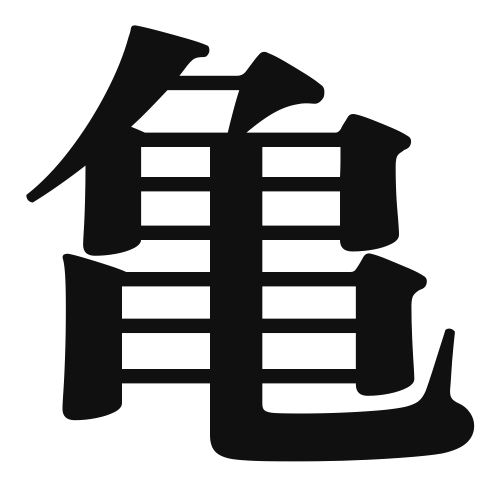1. Overview of Meaning
The kanji “亀” (pronounced “kame” in Japanese) means “turtle” or “tortoise.” It represents a creature known for its longevity and wisdom, often symbolizing stability and protection in various cultures.
2. Formation and Radical
Formation of the Kanji: The kanji “亀” is classified as a pictogram, which means it visually represents the shape of a turtle. The character has evolved over time but retains its original form that resembles a turtle’s shell and limbs.
Radical: The radical for “亀” is “亀” itself, which is used in other kanji related to turtles and similar creatures.
3. Examples of Usage
Common Words and Phrases:
- 亀甲 (きっこう, kikkou) – tortoise shell
- 亀の子 (かめのこ, kamenoko) – baby turtle
Example Sentences in Daily Conversation:
- 「亀は長生きする動物です。」(Kame wa nagai suru doubutsu desu.) – “Turtles are long-lived animals.”
- 「公園で亀を見ました。」(Kouen de kame o mimashita.) – “I saw a turtle in the park.”
4. Synonyms and Antonyms
Similar Kanji:
- 海亀 (うみがめ, umigame) – sea turtle, which refers specifically to turtles that live in the ocean.
- カメ (kame) – a loanword from English, often used in casual contexts.
Antonyms:
- 兎 (うさぎ, usagi) – rabbit, which symbolizes speed and agility, contrasting with the slow-moving turtle.
5. Cultural and Historical Background
Connection to Japanese Culture: In Japanese culture, turtles are often associated with longevity and wisdom. They appear in various myths and folklore, symbolizing good fortune and protection.
Proverbs and Idioms:
- 「亀の甲より年の功」(Kame no kou yori toshi no kou) – “Experience is more valuable than youth,” emphasizing the wisdom that comes with age.
